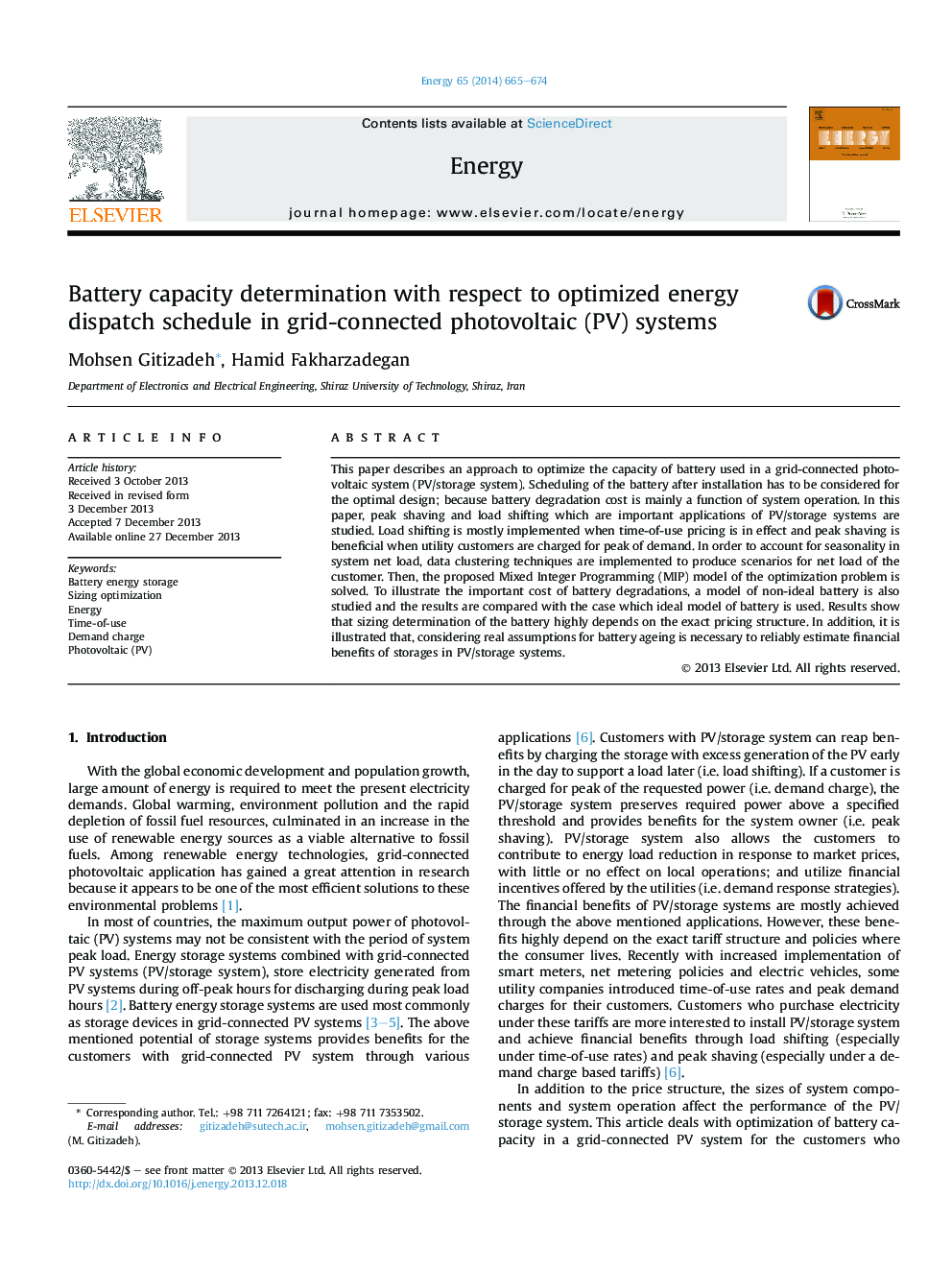| Article ID | Journal | Published Year | Pages | File Type |
|---|---|---|---|---|
| 1732723 | Energy | 2014 | 10 Pages |
•Optimization of battery capacity with respect to optimal scheduling of battery.•Consideration of battery ageing into the energy dispatch schedule optimization.•Implementing Fuzzy Clustering Method to account for variations in the system load.•Investigating effects of two time-varying tariffs on battery capacity determination.•Investigating effects of battery ageing modelling on effectiveness of battery systems.
This paper describes an approach to optimize the capacity of battery used in a grid-connected photovoltaic system (PV/storage system). Scheduling of the battery after installation has to be considered for the optimal design; because battery degradation cost is mainly a function of system operation. In this paper, peak shaving and load shifting which are important applications of PV/storage systems are studied. Load shifting is mostly implemented when time-of-use pricing is in effect and peak shaving is beneficial when utility customers are charged for peak of demand. In order to account for seasonality in system net load, data clustering techniques are implemented to produce scenarios for net load of the customer. Then, the proposed Mixed Integer Programming (MIP) model of the optimization problem is solved. To illustrate the important cost of battery degradations, a model of non-ideal battery is also studied and the results are compared with the case which ideal model of battery is used. Results show that sizing determination of the battery highly depends on the exact pricing structure. In addition, it is illustrated that, considering real assumptions for battery ageing is necessary to reliably estimate financial benefits of storages in PV/storage systems.
